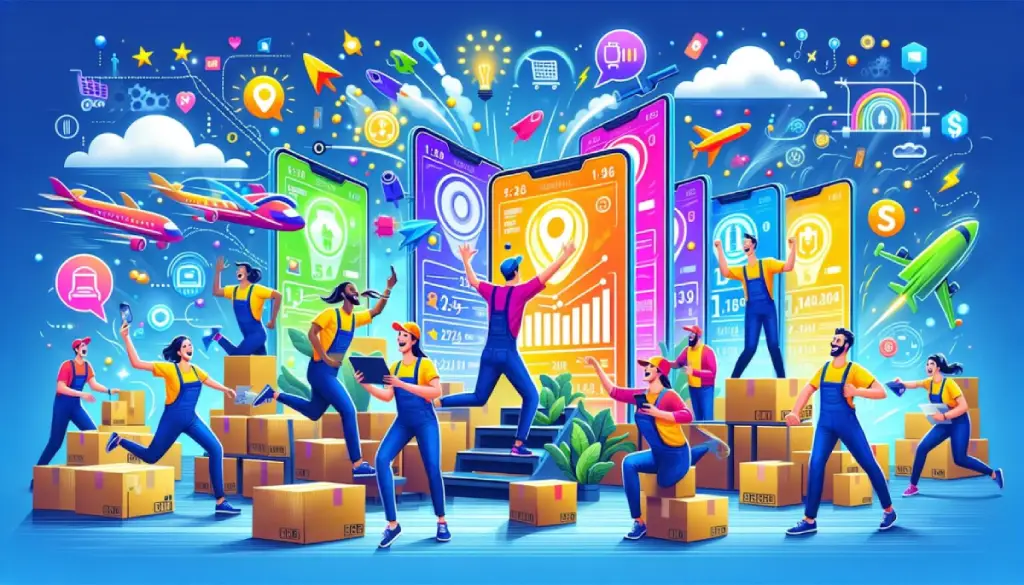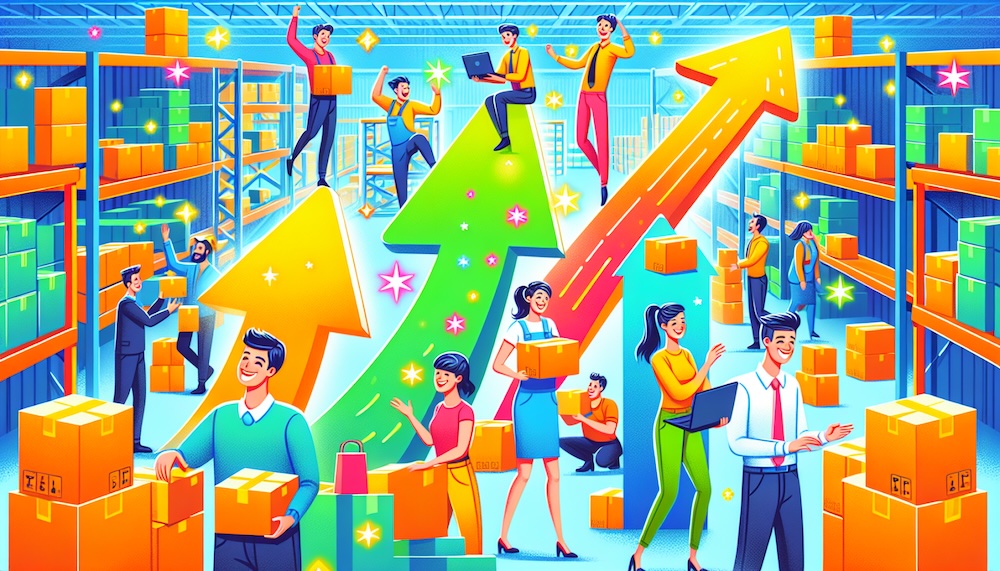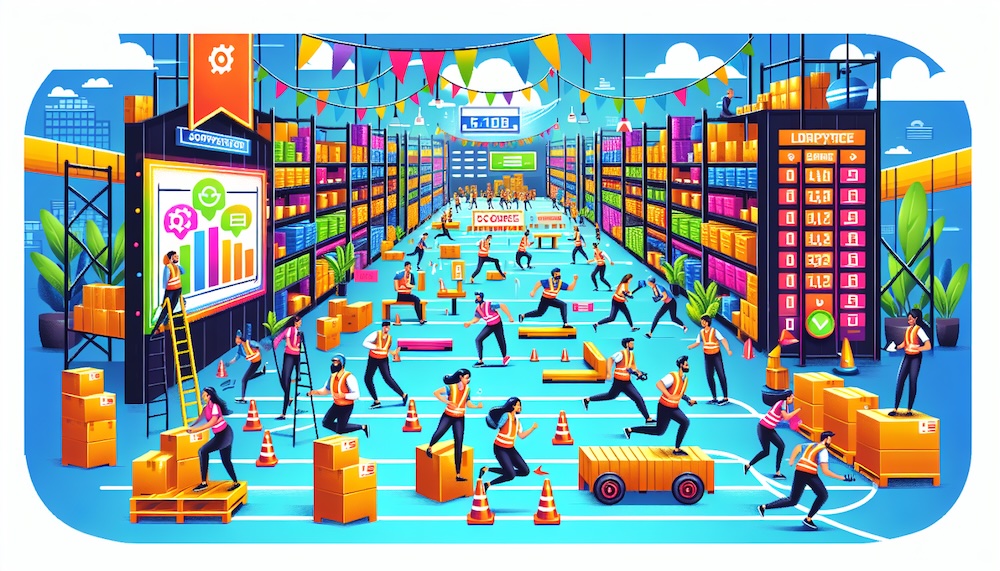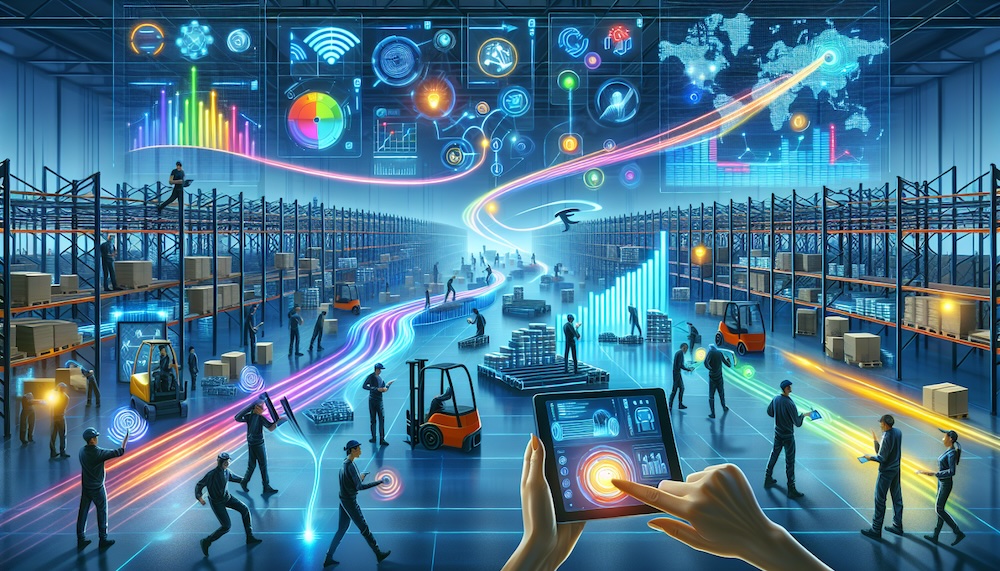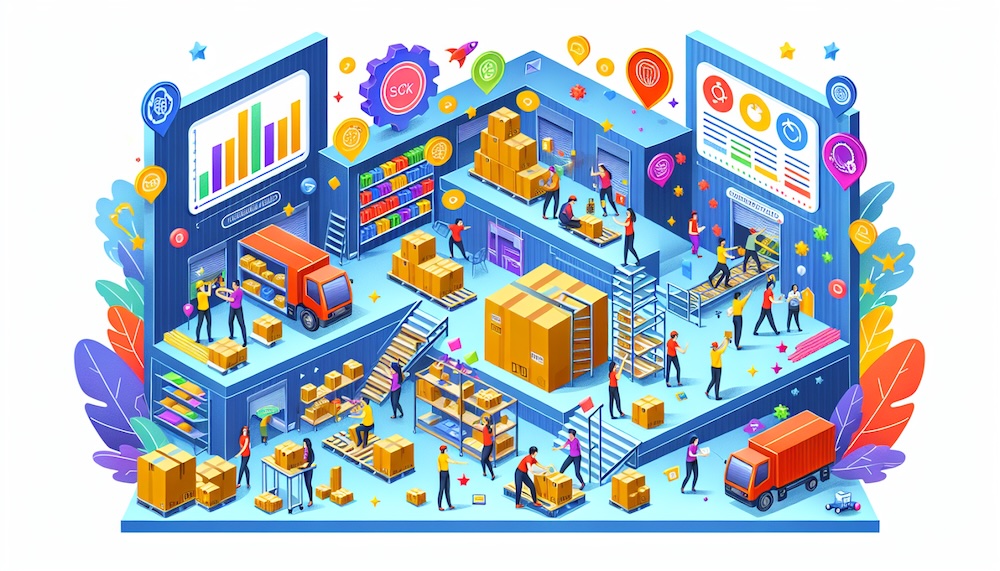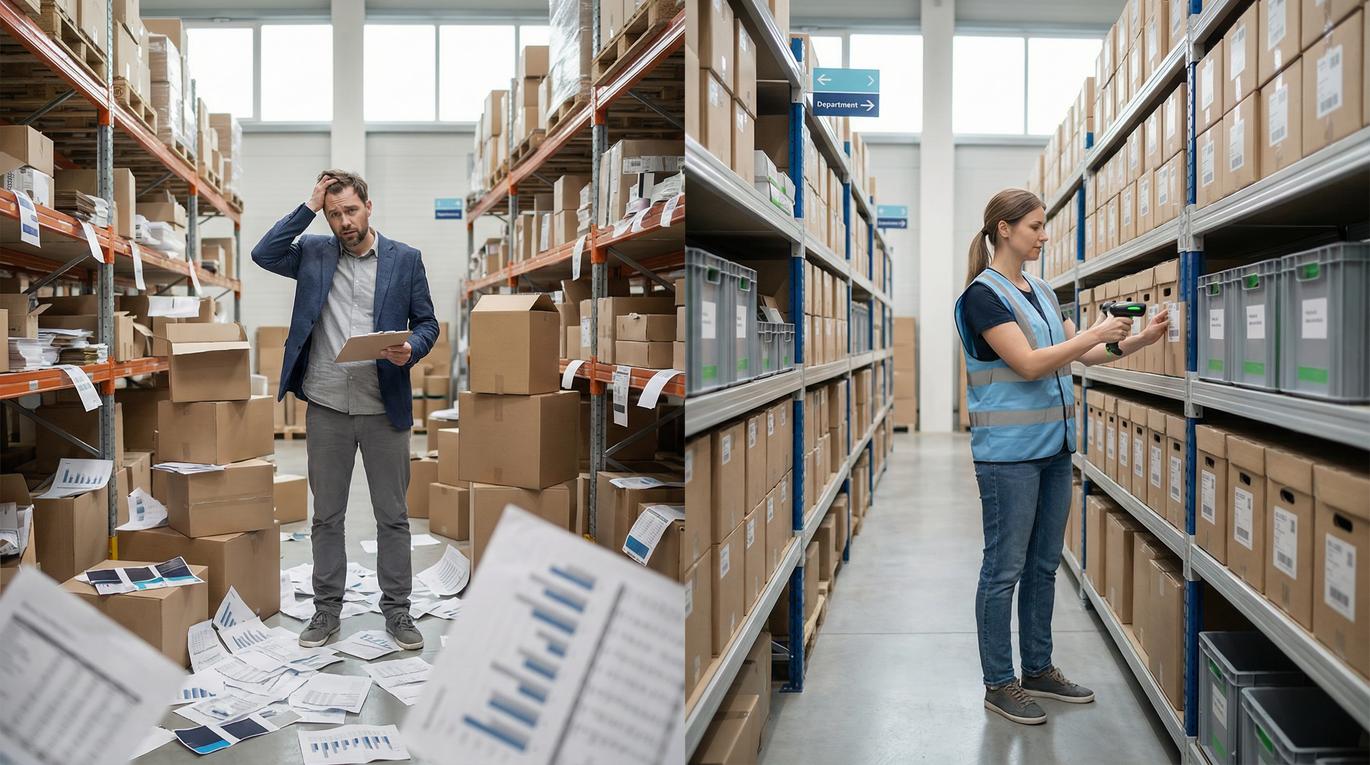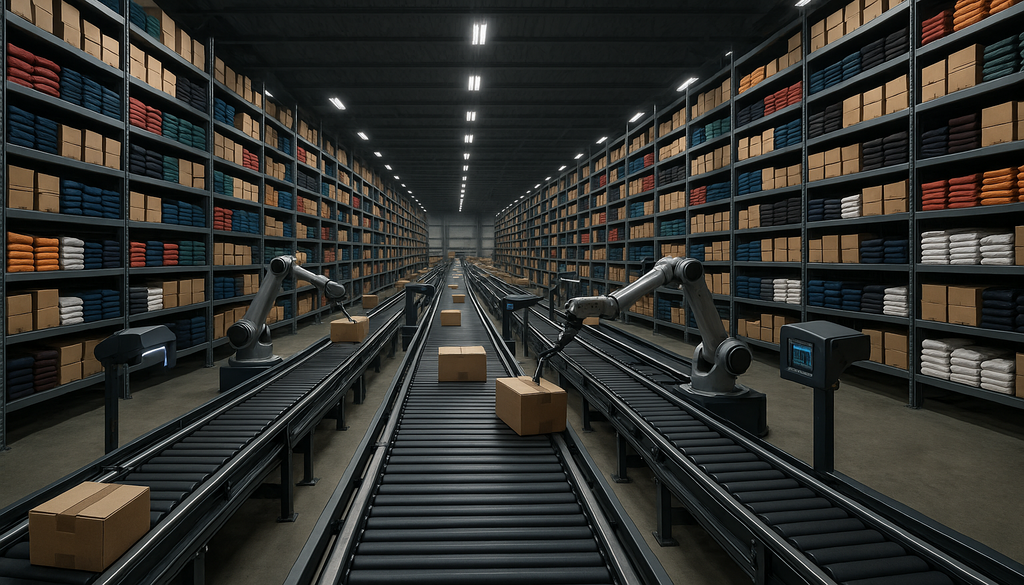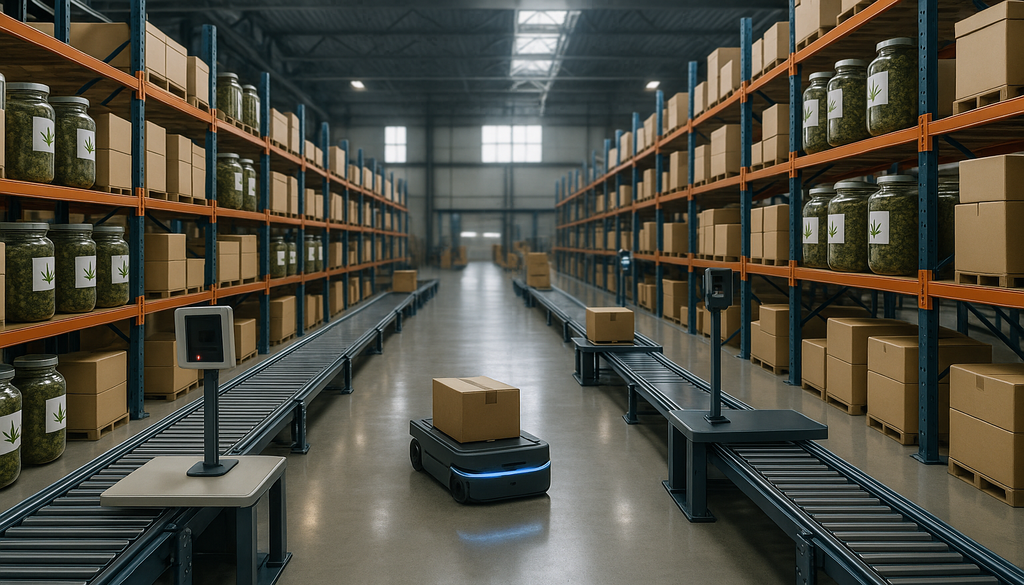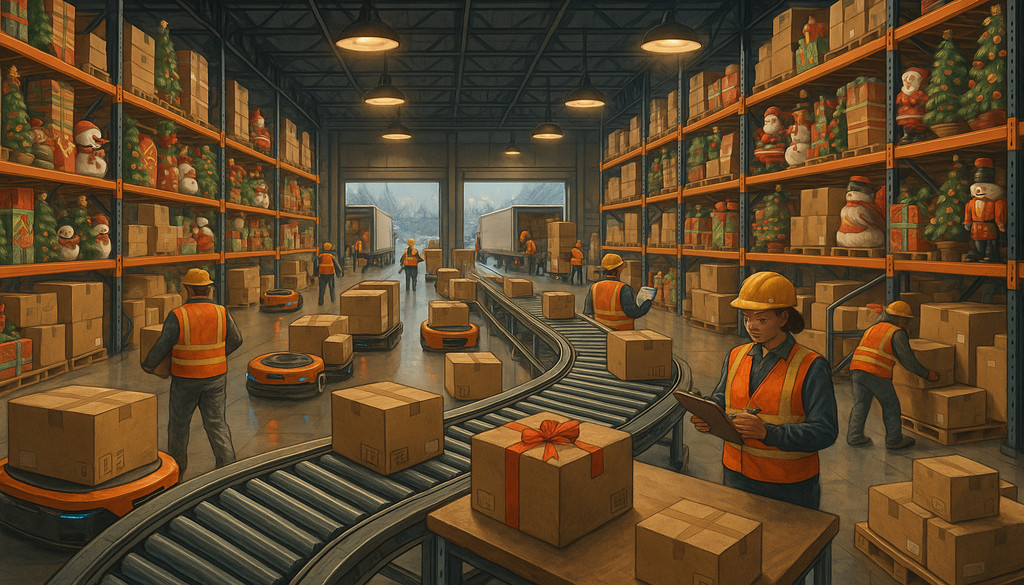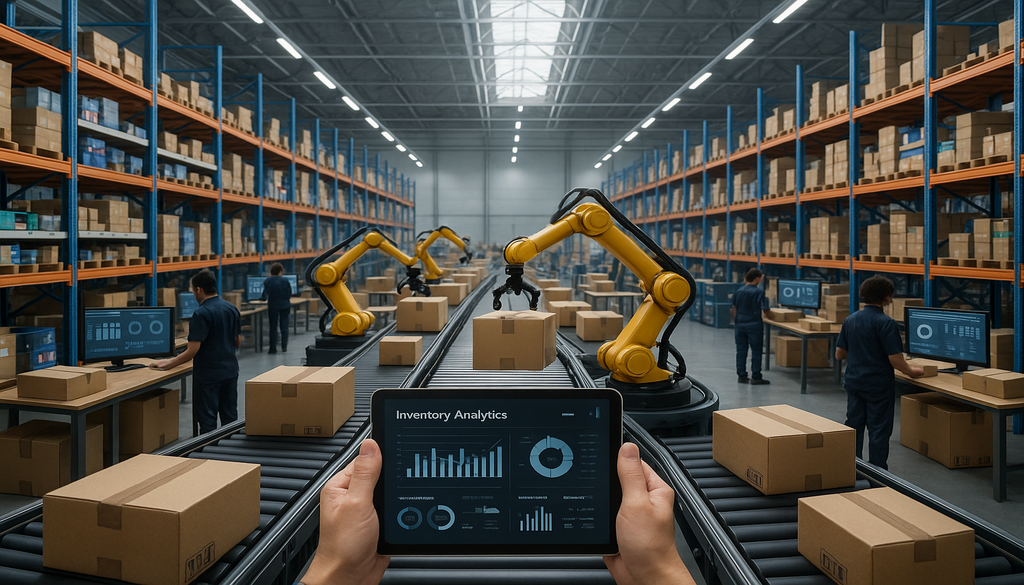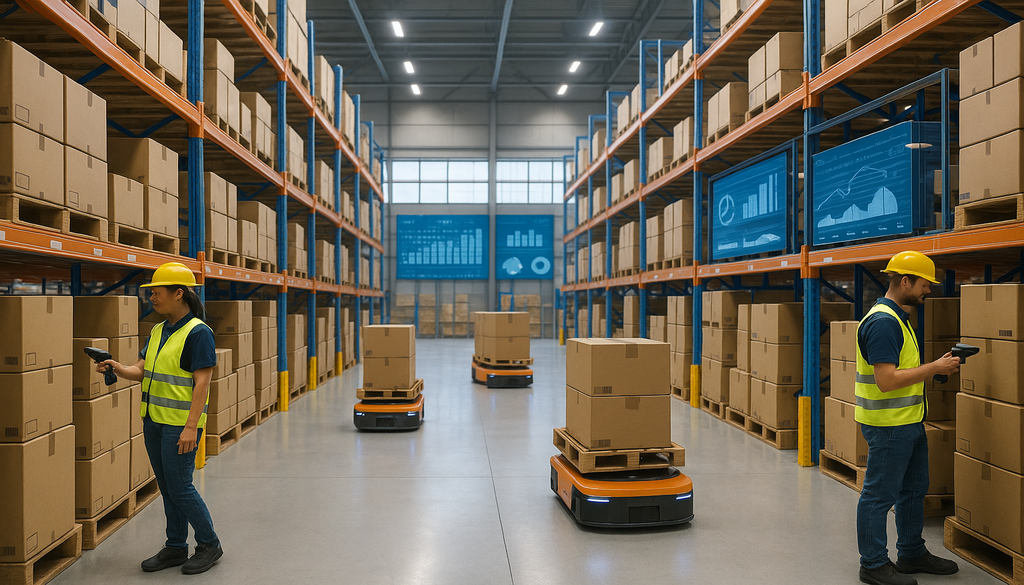Warehouse gamification uses game design elements like leaderboards, badges, and challenges to boost employee engagement and productivity. By making daily tasks more interactive, it can improve accuracy, teamwork, and job satisfaction. This article covers top strategies and real-world examples to help you implement gamification effectively in your warehouse.
Key Takeaways
- Gamification in warehouses uses game elements like points, leaderboards, and badges to boost employee engagement and productivity.
- Implementing gamification can reduce employee turnover by up to 43% and significantly enhance job satisfaction and operational efficiency.
- Successful gamification programs require clear objectives, recognition systems, and regular feedback to keep employees motivated and aligned with company goals.
Understanding Warehouse Gamification
At its core, gamification is a strategy that uses game design elements to promote specific objectives through rewards for desired tasks.
In the context of warehouses, this means incorporating game mechanics like:
- Leaderboards
- Badges
- Points
- Challenges
These are integrated into daily operations to drive desired behaviors and enhance overall performance.
The purpose of gamification in warehouses is multifaceted. It aims to:
- Increase picking accuracy
- Boost employee engagement
- Improve productivity
- Ensure safety
Positive feedback and a sense of achievement keep employees motivated and driven to succeed through gamification. Warehouses, with their repetitive tasks and data-driven environments, are particularly well-suited for gamification.
Gamification also fosters teamwork and healthy competition, significantly improving performance and morale among warehouse workers. When employees are engaged in gamified tasks, they are more likely to collaborate and support each other, leading to a more efficient and harmonious work environment.
Benefits of Gamification in Warehouse Operations
Gamification offers a plethora of benefits for warehouse operations, starting with enhanced employee engagement. Integrating game-like elements into tasks helps employees feel a sense of achievement and recognition, potentially increasing engagement by up to 60%. This heightened engagement translates into improved productivity, as motivated employees tend to work more efficiently.
Additionally, gamification can significantly reduce employee turnover rates, which is a common challenge in the warehousing industry. A well-structured gamification system can decrease turnover rates. Additionally, according to a study by Lucas Systems, nearly 84% of warehouse workers are more likely to stay with a company that implements gamified workplace competitions. This stability helps streamline operations and maintain a consistent level of performance.
The positive impact of gamification extends to operational efficiency and job satisfaction. For instance, Zippia mentions that integrating gamification can increase company profitability by up to seven times compared to companies that don’t employ the strategy. Back to employees, those who see immediate results from their work feel a greater sense of accomplishment, which fuels higher productivity and enhances overall job satisfaction.
Key Elements of a Successful Gamification Program
A successful gamification program in a warehouse setting hinges on several key elements. First and foremost is a strategic approach that includes clear objectives and ongoing assessment. Defining clear objectives—such as improving accuracy, boosting productivity, or enhancing safety—is crucial for an effective gamification strategy.
Rewards and recognition play a significant role in keeping employees motivated. Effective rewards can range from monetary incentives to recognition programs and non-monetary perks. Achievements recognized through badges or leaderboards foster a sense of accomplishment and encourage continuous engagement. Immediate feedback is equally important, as it allows employees to understand their performance and identify areas for improvement.
Game mechanics such as points and leaderboards are essential tools for tracking progress and driving participation. These game elements create a competitive atmosphere that motivates employees to excel in their gamified tasks. Combining all these elements effectively contributes to the overall success of the gamification program.
Practical Gamification Ideas for Warehouses
Implementing gamification in warehouses can take various forms, each designed to address specific aspects of warehouse operations. From accuracy challenges to speed competitions and team-based tasks, there are numerous ways to engage employees and enhance productivity.
Let’s delve into some practical gamification ideas that can transform your warehouse.
Accuracy Challenges
Accuracy is a critical component of warehouse operations, directly impacting inventory management and overall efficiency. One effective gamification strategy is to implement accuracy-based challenges, such as inventory checks. These challenges can ensure precise stock levels and minimize discrepancies. Employees can participate in timed inventory counting sprints, earning points for accuracy and speed.
Digital badges for accurate work promote a culture of excellence and motivate ongoing precision. Badges for quick and accurate counters can serve as tangible recognition of their efforts.
These accuracy challenges not only enhance employee engagement but also improve the operational effectiveness of warehouse processes.
Speed Competitions
Speed competitions are another effective way to boost motivation and productivity in warehouses. Offering rewards for top performers in speed tests can significantly increase employee participation and enthusiasm. Warehouse managers can utilize barcode scanning and order picking as ideal activities for these competitions due to their quantifiable nature, ultimately enhancing overall warehouse performance.
For instance, rewarding the fastest barcode scanners with badges like ‘Speed Scanner’ encourages healthy competition and engagement. Workplace competitions around speed tests foster a competitive spirit and drive employees to improve their performance.
This approach not only enhances productivity but also makes routine tasks more exciting and engaging.
Team-Based Tasks
Team-based gamification tasks are essential for fostering collaboration and building a supportive work culture in warehouses. Engaging teams in activities like ‘Hidden Item Hunts’ can promote cooperation and teamwork while making tasks more enjoyable. These team-based challenges encourage employees to work together towards a common goal, enhancing overall team performance.
Effective teamwork through gamification leads to improved morale and job satisfaction among employees. Incorporating gamified tasks into daily operations creates an environment where collaboration and mutual support are the norms, leading to higher productivity and a more positive work atmosphere.
Integrating Technology for Enhanced Gamification
Technology plays a pivotal role in enhancing gamification strategies in warehouses. Real-time feedback systems, such as leaderboards and points systems, provide instant updates on performance, keeping employees engaged and motivated. When integrated with warehouse management systems, these foster a competitive atmosphere and allow employees and managers to see their progress in real time.
Wearable devices, such as ring scanners and augmented reality smart glasses, can further enhance gamification by providing instant performance updates and guiding personnel to inventory locations. These innovative solutions not only improve accuracy and speed but also make the work more interactive and engaging.
A study mentioned earlier revealed that gamification strategies, including competitions with incentives, have led to increased employee engagement and productivity in warehouses. Integrating technology into gamification programs creates a more dynamic and responsive work environment, boosting productivity and job satisfaction.
Steps to Implement Warehouse Gamification
Implementing a gamification strategy in a warehouse requires a structured approach. First, ensure that basic warehouse operations are stable, as gamification should not mask underlying issues. Articulate the objectives of your gamification strategy, aligning them with company goals such as enhancing productivity or safety.
Transparency is crucial. Clearly communicate rules, rewards, and objectives to all employees to maintain fairness and avoid confusion. Select game mechanics like leaderboards and badges that resonate with your operational goals to foster a supportive team environment.
Establish a rewards and recognition system, including both monetary and non-monetary incentives, to motivate employees. Regularly analyze performance data to refine the gamification strategy based on employee engagement and achievements. This continuous improvement process ensures that the gamification program remains effective and aligned with organizational goals.
Gradually increasing task difficulty and incorporating experiential activities can further enhance motivation and performance.
Measuring Success: Performance Metrics and Employee Feedback
Measuring the success of a gamification program involves tracking performance metrics and gathering employee feedback. Real-time scoreboards displaying performance metrics promote transparency and a competitive atmosphere among employees. Establishing clear key performance indicators (KPIs) is essential for assessing the effectiveness of gamification initiatives.
Continuous employee feedback is crucial for refining gamification strategies to align with performance objectives. Encourage ongoing feedback to continuously enhance the effectiveness of the gamification strategy. This feedback can reveal insights into what works well and what needs improvement, allowing for necessary refinements.
You can monitor performance and engagement by utilizing analytics tools. These tools are often integrated within gamification software. Data on participant engagement, achievements, and areas that can be improved can be collected to enhance the gamification strategy. This ensures the gamification program remains dynamic and responsive to employee needs.
Case Studies: Successful Gamification in Warehousing
Real-world examples of successful gamification provide valuable insights into what works. Kenco, for instance, has implemented gamification strategies to boost bottom lines and employee engagement. Their approach focuses on enhancing morale and creating a more dynamic work environment through competitions and leaderboards.
Competitions can be structured for individual workers or teams, such as shift versus shift contests, using leaderboards to boost motivation. These examples illustrate how gamification transforms warehouse operations, leading to significant improvements in performance and employee satisfaction.
Summary
Warehouse gamification is a powerful tool for enhancing employee engagement, productivity, and operational efficiency. By incorporating game mechanics into daily tasks, you can create a dynamic and motivated workforce. Whether it’s accuracy challenges, speed competitions, or team-based tasks, there are numerous ways to implement gamification effectively.
Technology plays a crucial role in maximizing these strategies by providing real-time feedback and interactive experiences. By following a structured approach and refining your gamification program using performance metrics and employee feedback, you can foster a positive, productive work environment.
Ready to Boost Engagement and Productivity in Your Warehouse?
Transforming your warehouse operations with gamification can lead to a more motivated, engaged, and productive team. At SphereWMS, our warehouse management system integrates seamlessly with gamification strategies, offering real-time feedback, performance tracking, and streamlined operations.
Take the next step: Contact us today to learn how SphereWMS can enhance your warehouse’s efficiency and create a more dynamic work environment!
Frequently Asked Questions
What is the primary purpose of warehouse gamification?
The primary purpose of warehouse gamification is to boost employee engagement and encourage positive behaviors, which leads to improved productivity, accuracy, and safety. So, it’s all about making work more enjoyable while getting results.
How does gamification reduce employee turnover in warehouses?
Gamification boosts job satisfaction and engagement, significantly cutting turnover rates by 18% to 43%. So, a fun and rewarding work environment keeps employees happier and sticking around longer.
What are some key elements of a successful gamification program?
A successful gamification program hinges on a strategic approach with clear objectives, effective rewards, recognition, and immediate feedback. These elements help keep participants engaged and motivated.
How can technology enhance gamification in warehouses?
Technology boosts gamification in warehouses by delivering real-time feedback and using wearable devices, making the work environment more engaging and motivating for employees. This approach can really enhance productivity and job satisfaction.
What performance metrics are important for measuring the success of gamification?
To measure the success of gamification, focus on real-time scoreboards, key performance indicators (KPIs), and ongoing employee feedback. These metrics will help you refine your strategy and enhance engagement effectively.

